How To Learn And Create Music With Block Chords On Guitar
by Simon Candy
 Are you sick of playing the same old chords on guitar? Open chords and bar chords while useful, will only get you so far.
Are you sick of playing the same old chords on guitar? Open chords and bar chords while useful, will only get you so far.
Today, you learn some chords that sound advanced but are quite easy to play. These chords can be played in multiple positions on the fretboard, covering the entire range, and can be used in both a rhythm and soloing context.
Additionally, it is easy to switch between the three main chord types used in music, that being major, minor, and dominant.
So, what are they?
Well, they tend to go by several different names, but I like to call them block chords.
Today's article will focus on the visualisation and application of these chords on your guitar without going into any theory. You don’t need to know the theory behind these chords to be able to use them in your playing.
Watch the video below to learn more about visualising block chords on guitar.
What I present to you in the video will support and reinforce what you learn in the article:
How To Visualise Block Chords
Learning block chords can be challenging, but understanding the relationship between chords and how they relate to each other on the fretboard is key to making them easier to access and remember.
Simply memorizing chords from a chord encyclopedia page by page is not an efficient way to learn. While these books can be a great reference, it's important to focus on how the chords are related to one another on the guitar, as this will make them more useful to you.
Ultimately, it's essential that chords are easy to access on your guitar, and this can only be achieved by building a strong foundation of understanding how they relate to each other on the fretboard.
Let’s look at our first block chord shape to illustrate this point. The following is a major 7th block chord in root position:
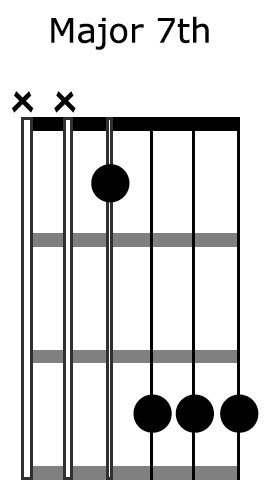
Now, if we want to make this a dominant 7th chord we only need to alter one note. This is because there is only one note difference between a major 7th and dominant 7th chord.
Here is the dominant 7th in root position:

Notice all we had to do was move the note on the 2nd string of the major 7th chord down one fret.
Further to this, it’s easy to create a minor 7th chord from the dominant form, again by altering just one note.
Here is the minor 7th in root position:
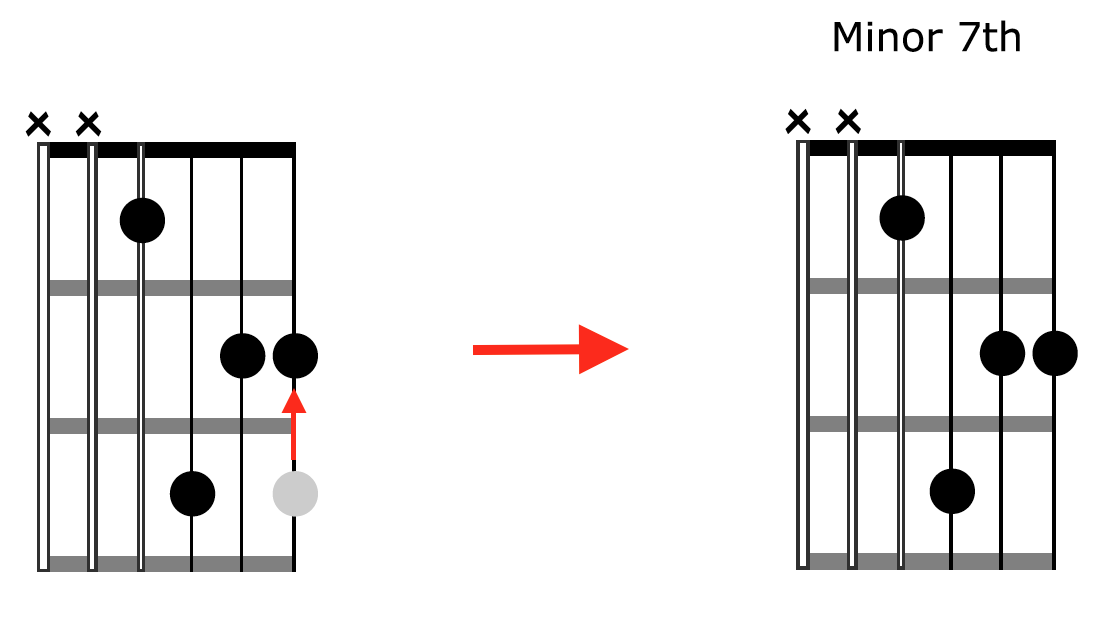
Notice all we had to do was move the note on the 1st string of the dominant 7th chord down one fret.
This is how to learn and visualise your block chords on the guitar. It’s all about how they relate to each other.
How To Open Up The Fretboard Using Block Chords
To be able to play block chords up and down the fretboard, you need to not only learn them in root position but also their inversions.
With that said, here are the Major 7th shapes for our block chord from root position through to 3rd inversion as they appear in relation to each other on the fretboard:
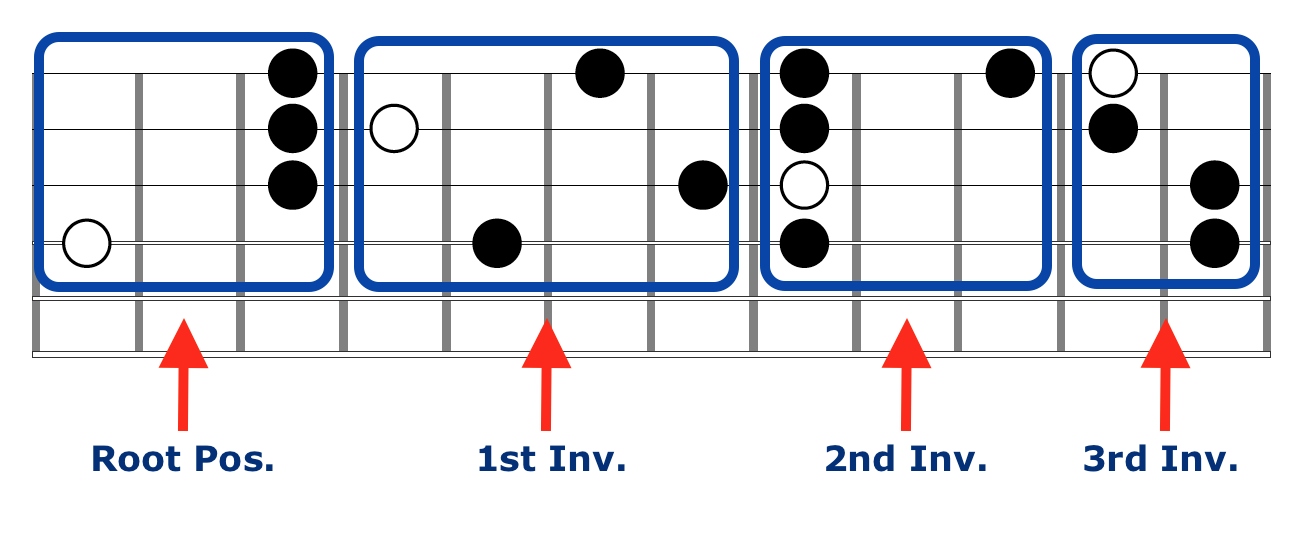
These four block chord shapes run right up the fretboard. After the 3rd inversion you would be back at the root position shape again, only this time it would be an octave higher on the guitar.
In each shape I have highlighted the root note. Knowing where the root note is in relation to the shape of a chord helps one find the particular chord they are after.
From these shapes evolve the dominant and minor 7th chords by changing just one note, as we did earlier with the root position form:
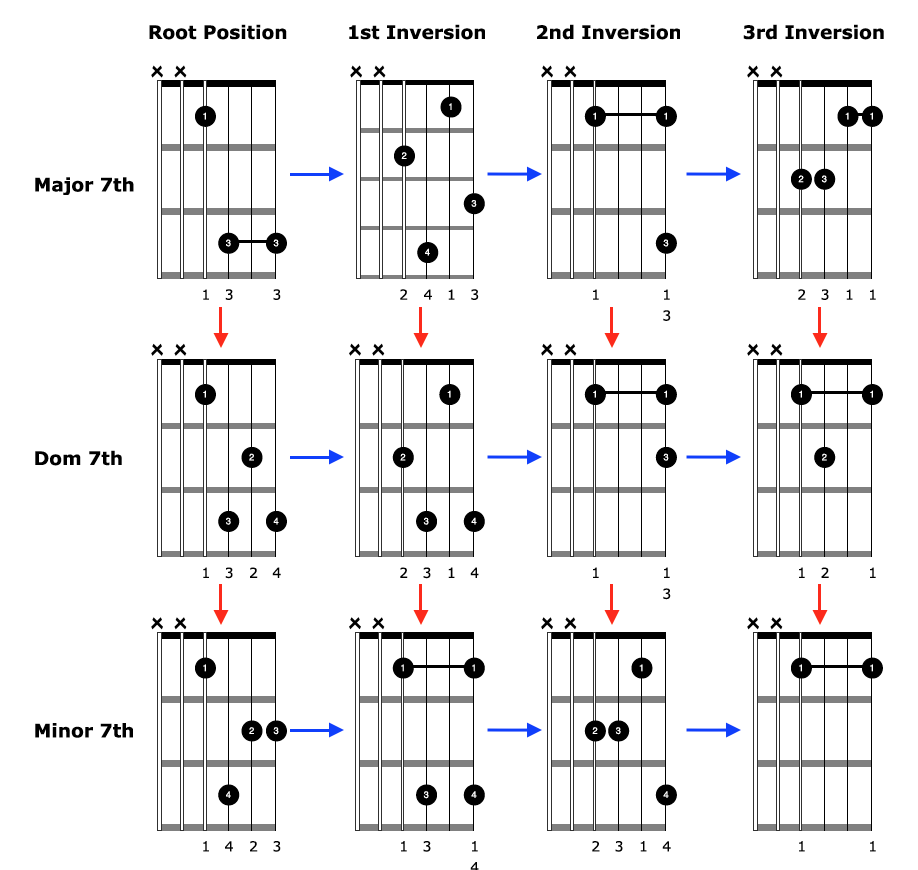
There are two ways you should practice the shapes above:
1. Horizontally, one row at a time. This will get you playing each of the 4 positions for the one type of chord (Follow the blue arrows)
2. Vertically, one column at a time. This will help you see the relationship between each chord shape, and just how similar they are (Follow the red arrows)
Notice there is only ever one note difference between each chord shape when following the red arrows.
How To Create Music Using Block Chords
Now you have a bunch of block chords running up and down the neck of your acoustic guitar, what do you do with them?
The answer is plenty!
You have four positions for each of the three main chord types you will come across in music; major, minor, and dominant.
A great progression to begin with is what’s known as a II V I. This progression pulls the II V and I chords out of the key giving you one of each chord type, major, minor, and dominant.
Here is a II V I progression in the key of G major:

And here is one way you could go about applying your block chords to this progression:
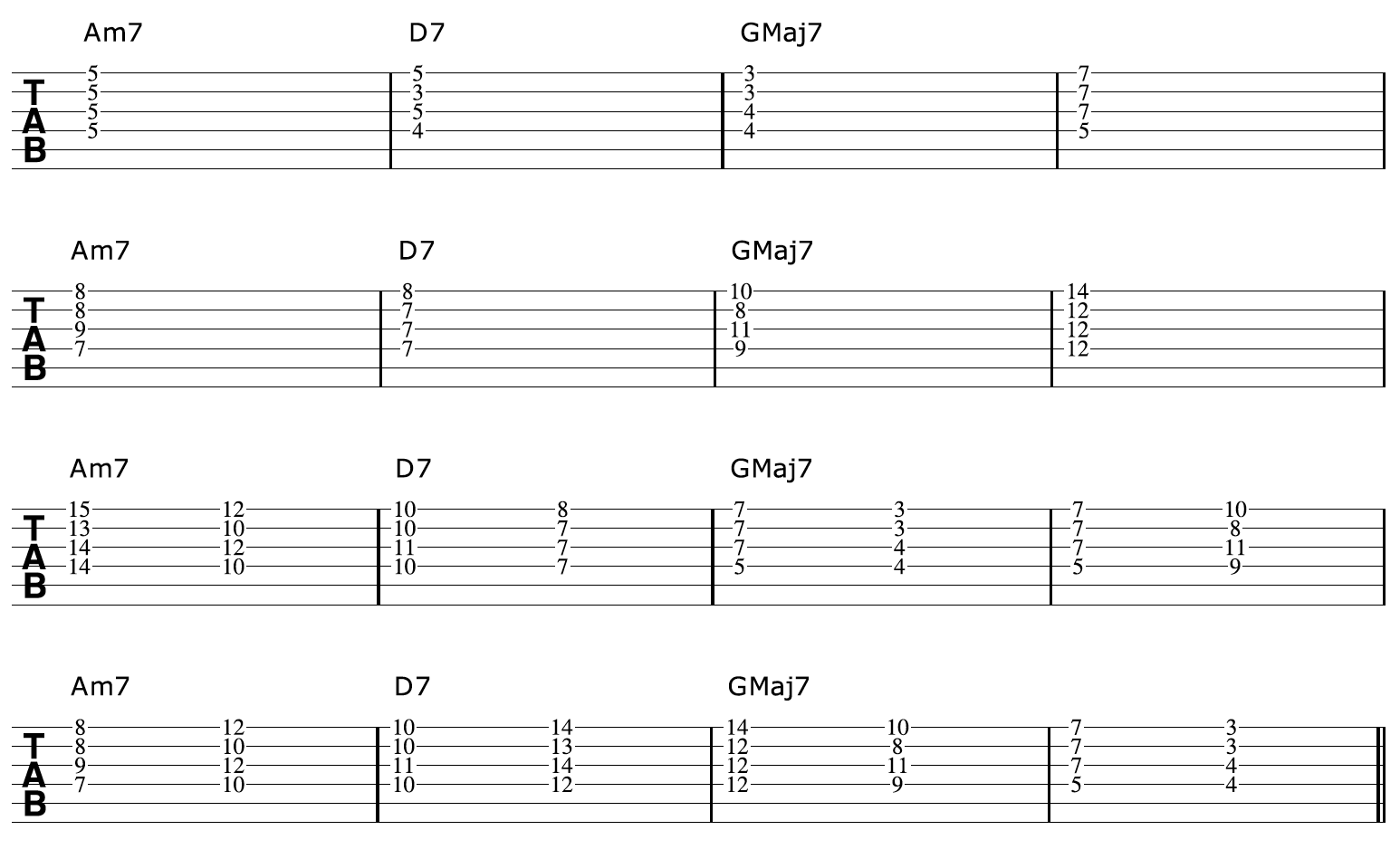
In the above example, I have used a variety of block chord forms over the progression. I have purposely kept more or less to the same area of the guitar for each rotation of the progression so that you can see how each chord relates, and that there are indeed common notes shared between each shape.
For the last two rotations of the progression, I am moving between different block chord forms over the static chord. This sounds great moving between different forms when the progression itself has not changed chord.
For my ways to apply block chords, check out the video below.
In it, you learn 3 specific ways to use block chords in your playing:
Discover 5 ways to significantly improve your rhythm guitar playing